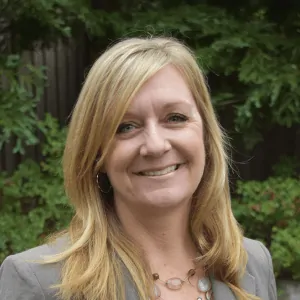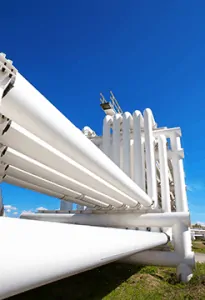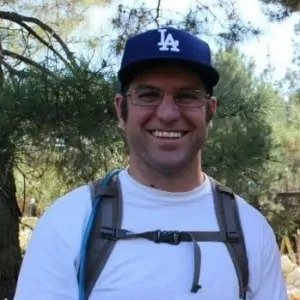

…and as waste settles, it can have an effect on equipment,” according to Pat Sullivan of SCS Engineers in this ClimateWire article. As the U.S. EPA focuses on pushing landfill owners into cutting down on methane emissions some worry that a combination of tightening regulations and poor cost analysis might put some smaller landfills out of business.
LANDFILL EMISSIONS: Going to the dump? You might make electricity
Kavya Balaraman, E&E reporter
Reprinted from ClimateWire with permission from E&E Publishing, LLC. Copyright 2016.
Read the NSPS – EG Technical Bulletin
Article by Cheryl Moran, CHMM
Technological advances in traditional printing and the advent of digital printing can make it more challenging to know when you need an air permit and which permit is best for your operations.
There are two main activities that may trigger air permitting – construction and operation; each of these comes with its own permitting requirements. Always check to see if you are required to apply for a construction permit before bringing new equipment on site. Once a source is installed, an operating permit will be necessary, which is the focus of this article.
Federal Title V operating permits (also referred to as Part 70 permits) are required for any facility that is considered a “major source” of air pollution. For purposes of operating permits only[1], a major source is a facility that has the potential to emit (PTE) more than 100 tons per year (tpy) of any criteria pollutant; volatile organic compounds (VOC), carbon monoxide (CO), nitrogen oxides (NOx), sulfur dioxide (SO2), particulate matter less than 10 microns (PM10), or more than 10 tons of any individual hazardous air pollutant (HAP) or more than 25 tpy of combined HAPs . Permitting thresholds are lower for facilities located in non-attainment areas.
Some facilities take limits on material throughputs, hours of operation, or emissions in order to artificially lower their PTE to qualify for a Federally Enforceable State Operating Permit (FESOP). These permits are also called “synthetic minor” permits.
Facilities that do not exceed federal permitting thresholds may still need to acquire a state operating permit. State permitting programs have more options than ever before and several states are summarized below.
ILLINOIS:
All “emission units” are required to secure an air permit, or register with the Illinois EPA, even very small sources of air pollution. An “emission unit” is any piece of equipment located at an emission source that has a potential to emit air pollution. Registration of Smaller Sources (ROSS) is for operations that emit less than 5 tpy of combined criteria pollutants. Sources with a potential to emit more than 5 tpy, but whose emissions are less than the threshold for a FESOP, may qualify for a “life-time” operating permit.
Visit for more information on the Illinois EPA permitting program.
WISCONSIN:
ROP Type A Registration Permit is for facilities with actual emissions of less than 25 tpy for criteria pollutants and 6.25 tons per year for HAPs.
ROP Type B Registration Permit is for facilities with actual emissions of less than 50 tpy for criteria pollutants and 12.5 tpy for HAPs.
ROP C Registration Permit for Printers is only available to printers. To qualify for this permit, emissions of each criteria pollutant are limited to 25 tons per year, and HAPs are limited to 12.5 tons per year.
General Operation Permit (GOP) for Printers applies to digital, screen, lithographic web printing (both heatset and coldset), and lithographic sheetfed printing.
INDIANA:
Source Specific Operating Agreement for Surface Coating or Graphic Arts Operations is available to printers with total VOC and HAPs that do not exceed 15 lb/day (7 lb/day in select counties).
Permit by Rule may be used for facilities that qualify for an operating agreement with criteria pollutant and HAP emissions that do not exceed 20% of the major source limits.
Find more on the Indiana permit options at http://www.in.gov/idem/airquality.
Whether you are applying for a state operating permit, or a federal operating permit, all applications will go through your state environmental regulatory agency.
[1] For construction permitting purposes, the thresholds that define a “major source” are typically higher than the operating permit thresholds.
For more information contact Cheryl Moran at SCS Engineers, Wisconsin or Ann O’Brien at SCS Engineers, Illinois, or for an SCS professional in your state.
Cheryl Moran is a Project Manager with SCS Engineers with more than 20 years of experience in the printing industry. She is a Certified Hazardous Materials Manager (CHMM) and has worked with air, water, and waste issues including permitting, environmental recordkeeping, reporting and monitoring programs, hazardous waste management, environmental compliance audits, and sustainability programs.
Ann O’Brien is a Project Manager with SCS Engineers. During her 32-year career in the printing industry she was responsible for environmental compliance programs, including, but not limited to, air and water quality permitting, environmental recordkeeping, reporting and monitoring programs, hazardous waste management, environmental compliance audits, and environmental site assessments and due diligence associated with real estate transactions and corporate acquisitions.
SCS periodically prepares technical bulletins to highlight items of interest to our clients and friends. These are published on our website. This SCS Technical Bulletin addresses:
Read and share the SCS Technical Bulletin here.
SCS Coal Combustion Residual Services
SCS Engineers’ Tracie Onstad Bills and Leslie Lukacs were both selected to receive the California Resource Recovery Association’s (CRRA) prestigious Service Award this year. According to CRRA Executive Director, John H. Dane, the award recognizes “exceptional individual service to the organization and a contribution of time or resources beyond expectations.” That sounds like an SCSer alright.

Tracie Bills is SCS’s Sustainable Materials Management Director and is based in our Pleasanton, CA, location. She has been on the CRRA board for 10 years and has served in several leadership positions within the organization, including as its President for three years. Her expertise revolves around commercial recycling technical assistance, environmental purchasing, large venue and event zero waste programs, research and sustainability planning, garbage hauler franchise compliance and review, construction and demolition program / ordinance analysis and writing, climate inventory compilation, research and feasibility studies to help clients with comprehensive waste prevention and zero waste programs.
Leslie Lukacs serves as a Sustainable Materials Management Specialist in our Santa Rosa, CA, office. She has been on the CRRA board for 12 years and also served in a variety of leadership positions. She also founded CRRA’s Green Initiatives for Venues and Events technical council and was an instructor for CRRA’s Resource Management Certification Program for 5 years. Leslie specializes in the design and implementation of sustainable materials management and zero waste programs and is a pioneer in the greening of venues and events throughout the nation. Her extensive expertise in the logistics of zero waste, recycling, and composting programs, such as outreach management, business assistance, master planning, waste audits and characterization studies, extended producer responsibility ordinance preparation and implementation, compliance, grant writing, and administration are all key to successful long-term programs.
Both women were selected by the CRRA Board of Directors to be the 2016 recipients of the Service Award. The awards will be presented at the organization’s Annual Conference Awards Ceremony on August 9 in Sacramento.
CRRA is California’s statewide recycling association. It is the oldest and one of the largest non-profit recycling organizations in the U.S. CRRA is dedicated to achieving environmental sustainability in and beyond the state through Zero Waste strategies including product stewardship, waste prevention, reuse, recycling and composting. The organization provides its members with resources to advance local, regional and statewide waste reduction efforts which result in critical environmental and climate protection outcomes. Members represent all aspects of California’s reduce-reuse-recycle-compost economy and work for cities, counties, municipal districts, and businesses as well as hauling companies, material processors, non-profit organizations, state agencies, and allied professionals.
SCS Engineers has published two Technical Bulletins summarizing the O&G NSPS final rule and outlining the new LDAR requirements. The two Bulletins explain the modification of how oil and gas sources will be permitted under the Clean Air Act and the new requirements to reduce methane leaks from new oil and gas facilities consistent with the EPA’s New Source Performance Standards.
Reference the U.S. Environmental Protection Agency (EPA) new source performance standards for Crude Oil and Natural Gas Production, Transmission and Distribution (O&G NSPS), which includes amendments to 40 CFR Part 60, Subpart OOOO and a new Subpart OOOOa. Subpart OOOOa will apply to facilities constructed, modified or reconstructed after September 18, 2015.
Click to read or share the Technical Bulletins:
https://www.epa.gov/controlling-air-pollution-oil-and-natural-gas-industry
Pat Sullivan, REPA, CPP, BCES
(916) 361-1297
An SCS Engineers Technical Bulletin will be released early in the week.
The U.S. Environmental Protection Agency issued limits on methane emissions from oil and gas wells that are more stringent than those it proposed last year. The final regulations released on Thursday, May 12, 2016, will add hundreds of millions in additional costs per year; at least 25 percent higher than the preliminary version published in August 2015.
EPA Administrator Gina McCarthy told reporters on a conference call that the mandates, applying immediately to new and modified wells, are a “critical first step in tackling methane emissions from existing oil and gas sources.”
Under the rule, companies must upgrade pumps and compressors while expanding the use of “green completion” technology meant to capture the surge of gas that can spring out of newly fracked wells. Such green completion techniques have been required for new and modified natural gas wells since 2015, but Thursday’s rule would broaden the requirement to oil wells too.
Take me to the EPA summaries. Click on the information sheets listed below:

Long story short, an escapee from San Quentin and any uncontrolled methane air molecule may be more similar than we may presume. In fact, a common LDAR practice is to use an infrared imaging camera; similar to the camera often used in search of fugitive criminals.
On a serious note, fugitive emissions are something that both industry and regulators have been focused on for decades, and the past and present efforts made to limit them are no less than remarkable.
Specific to Onshore Oil and Gas Exploration & Production, the Federal Regulations applicable to fugitive emissions are fairly young. Finalized in 2012, NSPS OOOO is no longer a toddler and is in the middle of growing into NSPS OOOOa (Public Comment Deadline March 11, 2016). On a national scale, NSPS OOOOa will expand fugitive emission monitoring and control requirements (VOC’s and methane) to several facility types associated with the industry and is expected to be finalized before the close of 2016.
In California, fugitive emissions from Onshore Oil and Gas Exploration & Production have been regulated for a long time. In fact, the O&G industry in Santa Barbara County has dealt with fugitive emission requirements since 1979. Since then SCS Engineers has been assisting with fugitive emission monitoring for our valued clients. Today, SCS Engineers provides the Oil and Gas Exploration and Production industry with efficient and effective LDAR services.
So fear not, SCS Engineers is ready to supply the knowledge and skill set you need to stay compliant, maintain your operations, and respect your bottom line. Remember, unless the doors are closed, pumps are turned off, and equipment is flushed and plugged; fugitive emissions requirements and LDAR will likely still apply.
Applicability: Determining Federal vs. State oversight is the first step. Non-Major Source Oil and Gas Production facilities are either subject to NSPS OOOO (soon to be OOOOa) or a related State specific rule (i.e. Colorado Regulation 7). Once oversight is determined, then there may still be exemptions for your facility (i.e. facility constructed before August 23, 2011). And finally, once regulatory oversight is confirmed and you determine that LDAR is required for your facility, then the last step is to figure out which equipment is applicable (i.e. VOC content > 10% by weight). Basically, an applicability determination can be daunting.
Equipment: EPA’s Method 21 is historically and currently referenced in all LDAR regulations. Method 21 requires an instrument such as the Flame Ionization Detector (FID) or Photo Ionization Detector (PID). More recently the Optical Gas Imaging (OGI) Camera has been included in LDAR regulations and utilized in LDAR programs. Presently, there are several instrument technologies that exist and are in the works, but not yet mainstream in Oil and Gas sector. Ultimately, if you were to find yourself conducting LDAR monitoring at your oil and gas facility tomorrow per an established regulation, you would most likely need to use an FID or OGI.
Recordkeeping: Personally, I like the simplicity of using paper forms for field notes; however, the old-fashioned way comes with risk. The up-front and ongoing data involved with an LDAR program is too much for maintaining a paper to computer process, regardless of how organized you think you are. Therefore, a computer database platform is recommended and necessary for managing your LDAR recordkeeping. Beyond just recordkeeping, a database platform can organize schedules, alerts, generate reports, extract trends, and many other applications to help keep your LDAR program compliant. One such platform worth considering is SCSeTools™. This cloud-based software can provide the database capabilities used on the desktop, but almost more importantly, provides mobile data input capabilities with the SCS MobileTools™ application fit for Android and IOS systems. Keep the fugitives from escaping, and document containment for the authorities!

Whether you want to discuss LDAR or Dodger baseball, don’t hesitate to contact me, or SCS Engineers.
Resources:
Learn more on the SCS service pages and read SCS project case studies from across the nation to help fine tune your program.
Outside links to the EPA proposed rulemaking website:
Thirty-four senators and 171 representatives argue in a brief filed February 23, that the EPA overstepped its boundaries in creating the carbon-cutting Clean Power Plan. In short, the brief states that they feel that Congress never gave the EPA a clear statutory directive or authority to transform the nation’s electricity sector. The brief points out that the EPA seeks to make “decisions of vast economic and political significance” under a “long-extant statute,” and in doing so must point to a “clear statement from Congress.”
Yesterday’s brief comes just two weeks after the U.S. Supreme Court ruled the EPA cannot begin enforcing the rule until legal challenges filed by 25 states and four state agencies are resolved.
The D.C. Circuit Court of Appeals will hear oral arguments on the merits of the states’ case on June 2.
With the brief it is clear that the Clean Power Plan is not only facing legal challenges but also political ones. It may be left for the next Administration to pick up this pieces and decide the fate of the Plan.
Meet Chuck Pryatel, the newly appointed Industrial Environmental Association (IEA) Secretary.
Chuck Pryatel is a Senior Project Advisor for SCS Engineers with over 30 years of experience in environmental regulatory compliance. He manages projects that include hazardous materials and waste compliance audits, preparation of spill prevention control and countermeasure plans, hazardous waste tank system assessments and certifications, and assists as a regulatory liaison resolving complex environmental issues. His experience includes completing environmental site assessments, subsurface investigations, preliminary endangerment assessments, health risk assessments, and environmental mitigation and clean-ups.
Prior to his private sector work Chuck served in positions of leadership at the County of San Diego Department of Environmental Health including Chief of the Hazardous Materials Division and Chief of the Site Assessment and Mitigation Division.
Chuck has a Masters of Business Administration from San Diego State University and a Bachelors of Arts in Biology from the University of California San Diego. He is a Registered Environmental Health Specialist in the State of California.
Congratulations Chuck!
The Industrial Environmental Association was formed in 1983 to promote responsible, cost-effective environmental laws and regulations, facilitate environmental compliance among member companies and provide related education activities for the community at large. The IEA’s evolution, however, has included an expanding role as the “voice” for manufacturing and associated companies in San Diego and Southern California, not only on legislative matters but on a variety of environmental issues that affect the quality of life of businesses in the region.
The Industrial Environmental Association actively insists on strong environmental compliance efforts among member companies as a matter of written policy. The IEA organizes a number of educational opportunities for member companies and the greater community including information exchanges, technical workshops, written papers, committees, and an annual conference.
IEA activism aims to prove with deeds as well as words that industrial companies care about the community, both environmentally and economically. IEA believes that industry must be involved in the process of environmental policy-making, and urges reliance on scientific, analytical data to evaluate regulations. The IEA willingly works closely with city and county government officials in an effort to realize environmental and community health protection.